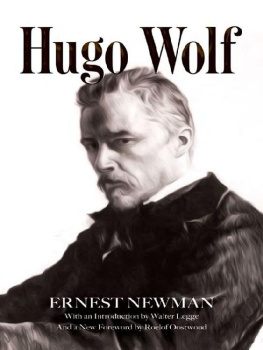H. Ernest Hunt - Spirit and Music
Here you can read online H. Ernest Hunt - Spirit and Music full text of the book (entire story) in english for free. Download pdf and epub, get meaning, cover and reviews about this ebook. year: 2010, genre: Science. Description of the work, (preface) as well as reviews are available. Best literature library LitArk.com created for fans of good reading and offers a wide selection of genres:
Romance novel
Science fiction
Adventure
Detective
Science
History
Home and family
Prose
Art
Politics
Computer
Non-fiction
Religion
Business
Children
Humor
Choose a favorite category and find really read worthwhile books. Enjoy immersion in the world of imagination, feel the emotions of the characters or learn something new for yourself, make an fascinating discovery.
- Book:Spirit and Music
- Author:
- Genre:
- Year:2010
- Rating:5 / 5
- Favourites:Add to favourites
- Your mark:
- 100
- 1
- 2
- 3
- 4
- 5
Spirit and Music: summary, description and annotation
We offer to read an annotation, description, summary or preface (depends on what the author of the book "Spirit and Music" wrote himself). If you haven't found the necessary information about the book — write in the comments, we will try to find it.
Spirit and Music — read online for free the complete book (whole text) full work
Below is the text of the book, divided by pages. System saving the place of the last page read, allows you to conveniently read the book "Spirit and Music" online for free, without having to search again every time where you left off. Put a bookmark, and you can go to the page where you finished reading at any time.
Font size:
Interval:
Bookmark:
The Project Gutenberg EBook of Spirit and Music, by H. Ernest Hunt
This eBook is for the use of anyone anywhere at no cost and with
almost no restrictions whatsoever. You may copy it, give it away or
re-use it under the terms of the Project Gutenberg License included
with this eBook or online at www.gutenberg.org
Title: Spirit and Music
Author: H. Ernest Hunt
Release Date: May 20, 2007 [EBook #21542]
Language: English
*** START OF THIS PROJECT GUTENBERG EBOOK SPIRIT AND MUSIC ***
Produced by David Newman, Sigal Alon, Chuck Greif and the
Online Distributed Proofreading Team at http://www.pgdp.net
By the same Author
NERVE CONTROL
SELF TRAINING
A BOOK OF AUTO-SUGGESTIONS
THE INFLUENCE OF THOUGHT
A MANUAL OF HYPNOTISM
THE HIDDEN SELF
POINTS ON PRACTISING
Spirit and Music
Author of Nerve Control, Self Training, &c., &c.;
Lecturer in Psychology at the Training School for
Music Teachers, The Metropolitan Academy of
Music, The Kensington School of Music, &c.,
London
LONDON:
KEGAN PAUL, TRENCH, TRUBNER & CO., LTD.
J. CURWEN & SONS, LTD.
NEW YORK: E. P. DUTTON & CO.
1922
Printed in Great Britain by St. Stephen's Printing Works, Bristol.
| CHAP. | |
| I | The Spirit of Music |
| II | The Place of Music in Life |
| III | The Expression of Life |
| IV | Spirit a Living Fact |
| V | The Conditions of Inspiration |
| VI | The Interpreter |
| VII | The Teacher |
| VIII | The Soul of Song |
| IX | Music and Education |
| X | The Artistic Temperament |
| XI | "Pure Music" |
| XII | The Purpose of Art |
THE SPIRIT OF MUSIC
"Art is the Manifestation of the Spiritual by means of the Material"
Newlandsmith
Music is a part of life. It is not merely an accomplishment or a hobby, nor yet a means of relaxation from the strenuous business of earning a living. It is not an addendum or an excrescence: it is an actual part of the fabric of life itself. The object of these pages will be to show how closely Music, and indeed Art in general, has woven itself into the pattern of our lives, and how intimately it may influence and fashion the design.
The structural basis of Music is vibration. Sound comes to us in the guise of air-waves, which impinge upon the drum of the ear. The nerve-impulse thus aroused is conveyed to the brain, and there translated into sound. Strictly speaking there is thus no sound until the brain translates the message, while if the machinery of the ear be too dull to answer to the vibration the sound simply does not exist for us. Beyond doubt the world is full of sounds that we cannot hear and of sights that we never see, for of the whole range of vibration our senses permit us to garner but the veriest fragmenta few notes here of sound, and a brief range there of sight, out of the whole vast scale of vibrant Nature.
There are sounds which are musical, and others that are raucous and mere noise. The difference lies in the fact that harsh sounds are compounded of irregular vibrations, while the essence of Music is that its waves are rhythmic and follow each other in ordered swing. Rhythm is thus the primary manifestation of Music: but equally so it is the basic characteristic of everything in life. We learn that in Nature there is nothing still and inert, but that everything is in incessant motion. There is no such thing as solid matter. The man of Science resolved matter into atoms, and now these atoms themselves are found to be as miniature universes. Round a central sun, termed a Proton, whirl a number of electrons in rhythmic motion and incessant swing. And these electrons and protonswhat are they? Something in the nature of charges of electricity, positive and negative. So where is now our seeming-solid matter?
When this knowledge informs our outlook we see that all that lives, moves: and even that which never seems to move, lives also in continual rhythm and response. The eternal hills are vibrant to the eye of science, and the very stones are pulsing with the joy of life. The countryside sings, and there is the beat of rhythm not merely in our hearts but in every particle of our body. Stillness is a delusion, and immobility a fiction of the senses. Life is movement and activity, and rigidity and stiffness come more near to what we understand as death. Yet even in death there is no stillness, there is but a change in the form of activity. The body is no longer alive as an organised community, but in its individual cells: the activity is the liveliness of decomposition. Thus all the world expresses life, and expresses it in a rhythm in which law and order reign supreme, and in which a sweet and sane regularity is the ordinance.
Regular rhythm involves accent. Whether or no there be any such emphasis as a thing in itself, the listening ear supplies it to meet a need. When we attend to a clock ticking, the tick-tock, tick-tock, however even it may sound at first, soon resolves itself into a rhythm with the accent on either the tick or the tock. So does the beat of an engine, or the hum of a railway train, merge itself into some definite sound picture, with the accent for relief that the ear demands. Thus out of rhythm grows very naturally an accentuation which gives balance, structure, and form. We start with the little unitsthe ticks and the tocksand we build something bigger by grouping these together. This is a principle which we may see running through the activities of life in a thousand forms.
Bricks are made to pattern and thus possess a rhythm of their own, but when they are laid in courses they merge their individual rhythm into the ordered lines of the courses. These again may be comprehended in larger units of arches, buttresses, and stories: and all these again will be grouped and contained in this or that style of architecture. So, too, Music may begin with notes and tones, but accent quickly groups these into larger units to satisfy the senses in their demand for balance and proportion. Thus by increasing the size of our unit we build the rhythm of form and lay the foundation for the further development of the Art.
Since Nature is regular, from the beating of our own hearts to the swing of universes in the heavens, therefore engrained in our very selves is this claim for ordered progression, balance, and sustained sequence. When we attain this, whether in Music or otherwise, we derive a measure of restfulness and satisfaction and we gain a sense of completeness. Any work of Art should leave us with this conviction, that nothing could be added or left out without marring the perfect proportion of the whole. "Jazz," whether in Music or in any other direction, gives just the very opposite effect, marring the sense of proportion and distorting the feeling of satisfaction. It exists as a testimony to a morbid dissatisfaction with life, it gives emphasis to the unbalanced and neurotic. The true beauty of Artas of Musicconsists on the contrary of this larger rhythm which makes for wholesomeness and proportion, which achieves at once the rest and the satisfaction that the soul craves. Its wholesomeness is health, which again is ease. Its reverse is disease: and when Music becomes mere noise and discord it is the same as when beauty becomes ugliness and health vanishes in sickness.
The second element of Music is melody, and this corresponds to the outline in Nature. Things have their shapes and their forms, even as our very lives consist of ups and downs, varied with occasional runs along the level. The country has its outlines, its hills that rise and climb, its valleys that fall and fade. There is the even line of the horizon, topped by the swelling clouds: there are curves and sweeps in the swaying of trees and grasses, in the flight of birds, and in the grace of the human form. It is significant that Nature's handiwork so abounds in curves, whilst that of man is fashioned so much upon straight lines with consequent sharp points and angles. Is it not obvious that Art has had but scanty share in designing our towns and manufactories? Right angles, no doubt, stand for utility in a commercial age, but Nature with her longer purview has little use for them and prefers a more rounded way of progress. Nature inspires, but not in square-cut periods. It is a safe plan to turn to Nature, as to the diagram of God, if we find ourselves in any doubt as to the way.
Font size:
Interval:
Bookmark:
Similar books «Spirit and Music»
Look at similar books to Spirit and Music. We have selected literature similar in name and meaning in the hope of providing readers with more options to find new, interesting, not yet read works.
Discussion, reviews of the book Spirit and Music and just readers' own opinions. Leave your comments, write what you think about the work, its meaning or the main characters. Specify what exactly you liked and what you didn't like, and why you think so.




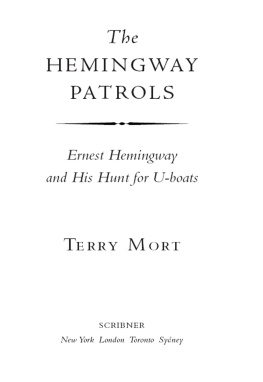
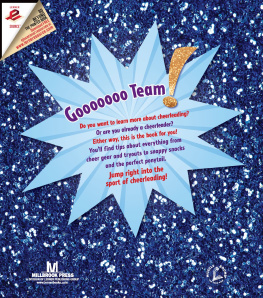
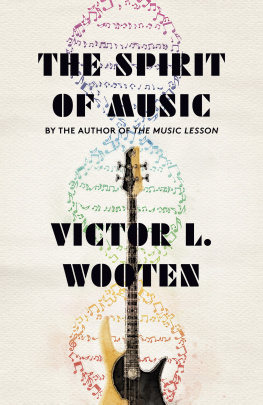
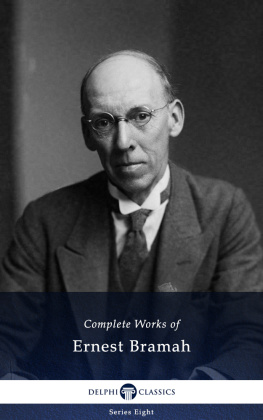
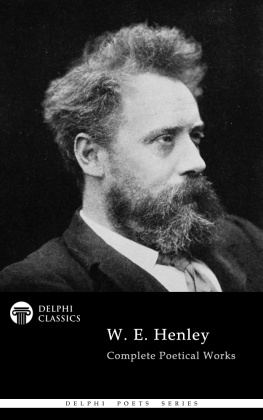
![Ernest Adams [Ernest Adams] - Fundamentals of Adventure Game Design](/uploads/posts/book/119415/thumbs/ernest-adams-ernest-adams-fundamentals-of.jpg)
